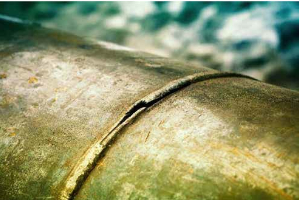Why use stainless steel? Stainless steel is the ideal material choice for a wide range of plant applications due to its resistance to corrosive products such as acids, caustic solutions, oxidizers, and environmental corrosive elements such as salt laden air when found near the sea. However, other gases such as sulfur dioxide, hydrogen sulfide, carbon monoxide, and chlorine also attack stainless steel leading to localized pitting, stress corrosion, and crevice corrosion cracking. Resistance to these gases depends on their temperature and the alloying content material of the stainless steel.
The corrosion resistance of stainless steel is primarily a function of a thin surface film of chromium oxide (i.e., the higher the chrome content, the higher the corrosion resistance). Thus, martensitic (~13% Cr) and ferritic (~13% Cr) stainless steels are more susceptible to corrosion than austenitic (~17% Cr) stainless steels. While not as prone to general corrosion as carbon steels, stainless steels are subject to localized corrosion, pitting, stress corrosion cracking (SCC), and crevice corrosion cracking (CCC) due to surface contamination, corrosive environments, high temperature, and high stress. Corrosion becomes more of an issue as plants age and the stainless steel is not taken care of properly (i.e., kept clean, sound repairs completed, contact with dissimilar metals minimized).

